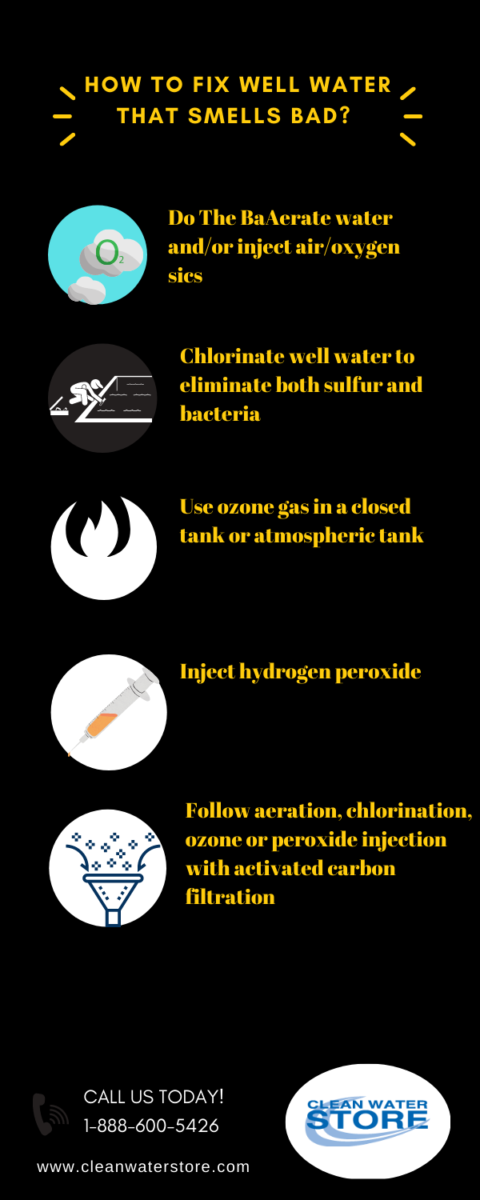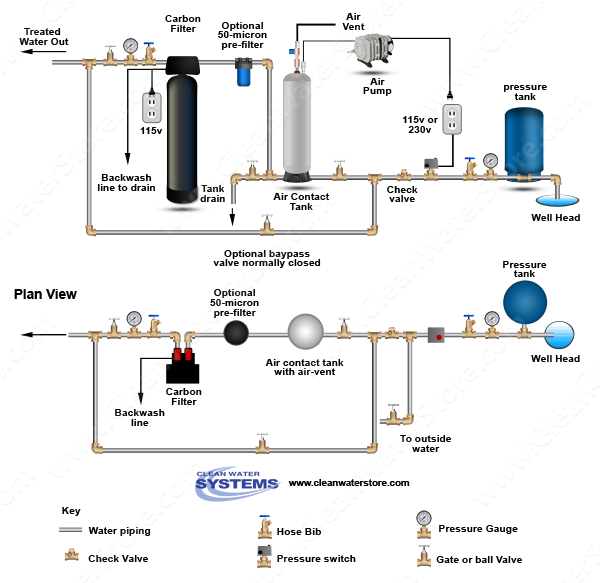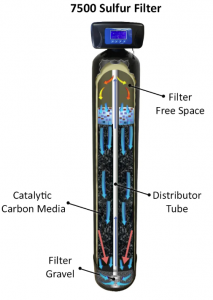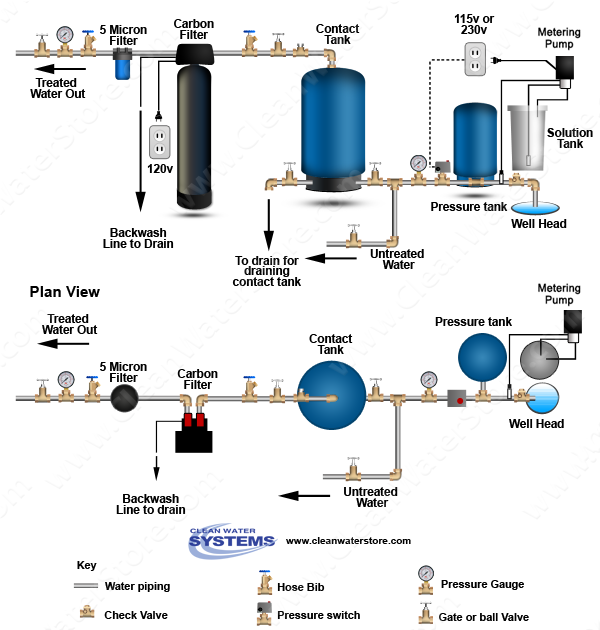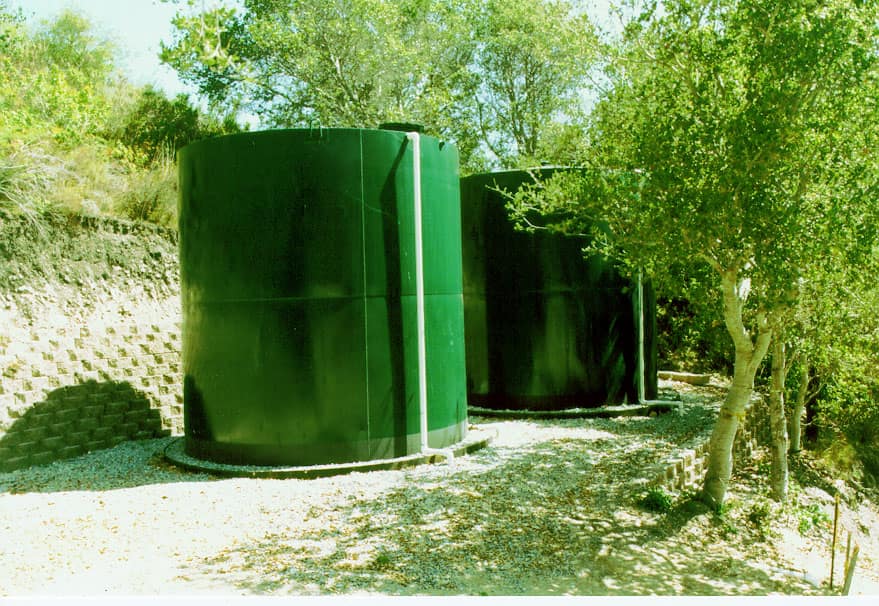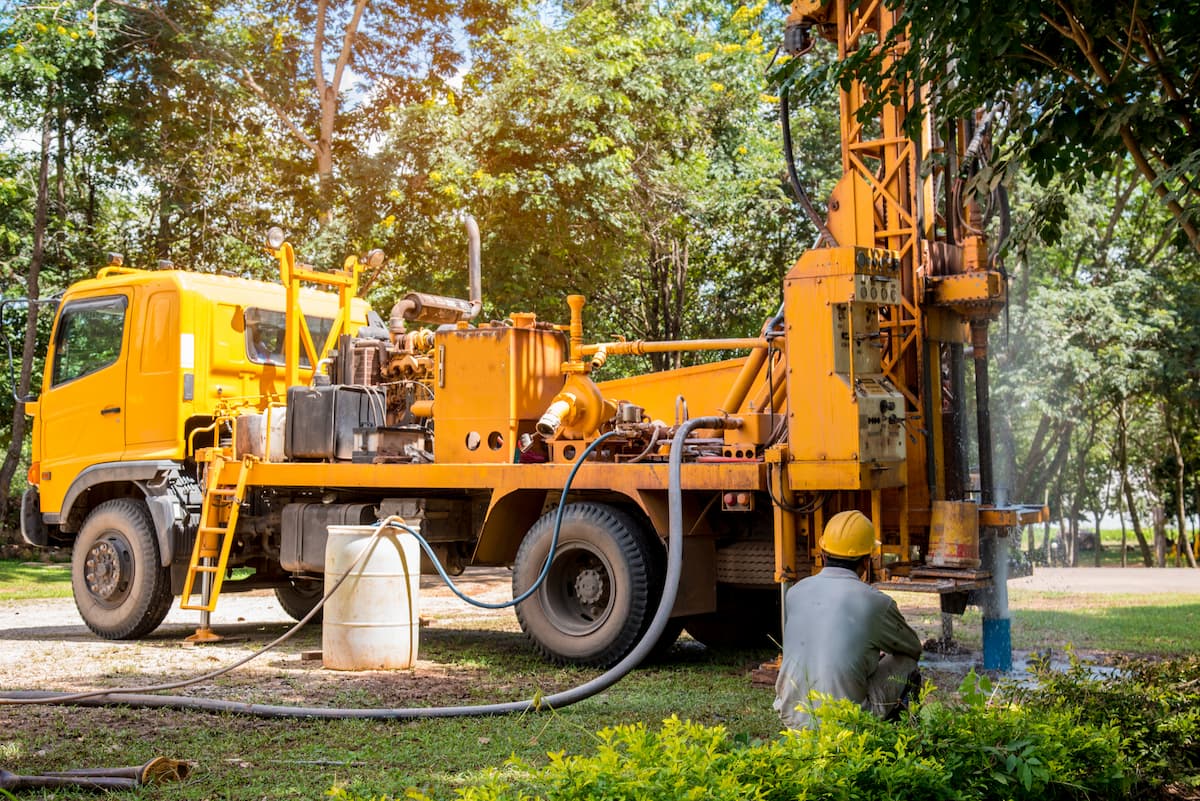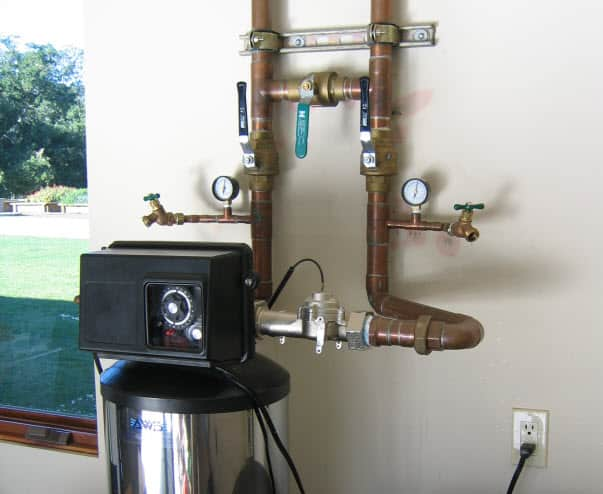How To Fix Well Water That Smells Bad? Simple Actions to Take.
 Rotten-egg smell in your well water?
Rotten-egg smell in your well water?
Fix well water that smells bad:
1. Aerate water and/or inject air or oxygen
2. Chlorinate well water to eliminate both sulfur and bacteria
3. Install a Catalytic Carbon Air Injection Backwash Filter
4. Inject hydrogen peroxide and filter with catalytic carbon.
5. Follow aeration, chlorination, ozone, or peroxide injection with activated carbon filtration
Many homeowners contact us to find out how to fix well water that smells bad. Water containing hydrogen sulfide gas (“H2S”) has a distinctive “rotten egg” odor, which may be especially noticeable when running hot water.
Such water can discolor coffee, tea, and other beverages and affect the taste of hot and cold water. It can also change the taste of cooked foods. Hydrogen sulfide (“H2S”) gas is a nuisance that is not usually a health risk at concentrations normally found in household water.
In high concentrations, hydrogen sulfide gas can be toxic. Usually, the gas can be detected long before it reaches harmful concentrations. H2S is flammable and poisonous. While such concentrations are not common, if gasses are released in a confined area, they could cause nausea, illness, and, in extreme cases, death.
H2S dissolved in water corrodes plumbing metals, such as iron, steel, copper, and brass, and exposed metal parts in washing machines and other water-using appliances. The corrosion of iron and steel from hydrogen sulfide forms ferrous sulfide or “black water,” which darkens silverware and discolors copper and brass utensils.
Sources of Hydrogen Sulfide

Iron and sulfur bacteria present in groundwater use iron and sulfur as energy sources and chemically change sulfates to produce H2S gas.
These bacteria use the sulfur available from decaying plants, rocks, or soil and often thrive in an iron-rich environment. The harmless, non-toxic bacteria normally exist in oxygen-deficient environments, such as deep wells and plumbing systems. The bacteria do not usually cause health problems but contribute to bad tastes, smells, and/or odors at low levels.
Hydrogen sulfide gas may also be present naturally in wells drilled in shale or sandstone, near coal or peat deposits, or in oil fields.
Though H2S is normally found in wells, it can also enter surface water through springs and quickly escape into the atmosphere. Often, water heaters become a source of sulfur water with foul H2S odors. The magnesium rod used in heaters for corrosion control can chemically reduce sulfates to H2S. Another source of H2S is sewage pollution.
Hot water heaters and heaters can often become sources of foul H2S odors. The magnesium rod used in heaters for corrosion control can chemically reduce sulfates to H2S. Sewage pollution is another source of H2S.
Other odors, such as sulfur odor, cucumber odor, pond odors, or algae-type odors, are most often the result of various bacteria in the water. Sulfur bacteria, iron bacteria, and other types of bacteria may be harmless to health but cause many odor problems. Odors are worse when the water is warmer or when the water sits in pipes for periods of time.
To fix well water that smells bad, a one-time shock chlorination can sometimes eliminate the unpleasant odor for several weeks or months.
Kill Odor-Causing Bacteria & Remove Odors With Oxidation Followed by Filtration
Odors are best eliminated by first applying an OXIDANT, followed (usually) by FILTER MEDIA. In some cases, aeration combined with carbon filter media alone can be used if the odor is low to moderate, although no disinfection will take place with aeration alone.
Sulfur odors (hydrogen sulfide gas) are often caused by sulfur-related bacteria. If the bacteria are present, the odor can redevelop in the household plumbing system or piping, even after filtration. Using a chlorination or ozone system can kill these bacteria and prevent the odor from coming back later.
Generally, it is best to use a disinfecting oxidant, such as chlorine or ozone, followed by activated carbon, to permanently eliminate the odor. Note that peroxide in water is not considered a strong disinfectant and may not be effective at eliminating these bacteria.
Aeration is a well-established, low-cost method of eliminating odors from water, especially for lower levels of odors and when bacteria is not a problem.
There are three main methods for residential applications:
- Air injection by a venturi injector
- Air injection by an air pump (air compressor) in a closed-pressure tank
- Air injection by spraying the well water into an open (non-pressurized) storage tank
- Single-tank air-charger type carbon filter
Air Compressor Injection System Diagram:
Single Tank Air Charger Sulfur Filters
Air-charger-type backwash filters remove odors from water through aeration and catalytic carbon. The Air-Charger 7500-AIR maintains an air pocket at the top of the tank while the system is in service.
As the water passes through the air pocket, sulfur odors are oxidized and then filtered out by the catalytic activated carbon.
The Air-Charger 7500 Air Injection Oxidizing Filter, as a single tank system, is an efficient and cost-effective system for the removal of sulfur odors
Air-charger type filters can contain catalytic carbon media OR, if the iron is present, Pro-OX iron filter media.
If the sulfur smell is present alone, catalytic carbon can be used. Manganese dioxide filter media is recommended if iron or manganese, along with odors, is present in the water.
Chlorine Is a Low-Cost Disinfectant That Kills Bacteria and Eliminates Odors
Chlorine can be removed by activated carbon, so no chlorine taste or odors are present in the tap water. See chlorination systems here
Best Filter Media to Use with Different Oxidant Types
-
- Aeration: Use Catalytic Carbon or Pro-OX Manganese Dioxide
- Hydrogen Peroxide: Use Catalytic Activated Carbon
- Chlorine Bleach: Use Standard Activated Carbon, Greensand, or Pro-OX
- Ozone Gas Injection: Use Catalytic Carbon, Greensand or Pro-OX
| Oxidant Type | Best pH range | Kills bacteria? | Minutes of contact time required* | Advantages | Disadvantages |
| Aeration | 5.0-7.0 | No | 3-10 | Low cost; safe | Weakest oxidant; does not kill sulfur bacteria; adds gasses to water which must be vented off. |
| Hydrogen Peroxide | 6.0-8.5 | No | 1-2 | Fast working; no chemical residual in water; safe; no after-tastes; | Moderate expense to buy peroxide on an annual basis. |
| Chlorine Bleach | 6.0-7.4 | Yes | 5-10 | Low cost, leaves chlorine residual for downstream disinfecting | Puts sodium into the water, slow-acting, very pH-dependent; can create THMs and other toxic residuals; |
| Ozone Gas | 6.0-8.0 | Yes | 1-2 | Fast working; does not leave a chemical residual in water; safe | High cost of ozone systems; adds gasses to water, which must be vented |
| Potassium permanganate | 6.5-7.4 | No | 5-10 | Good at eliminating a wide variety of odors | Pink water can be toxic if over-fed; needs to be used with greensand; causes severe staining if not handled properly |
| * Estimated time. Depends on pH and temperature | |||||
References:
USGS Q & A about well water that smells bad
Frequently Asked Questions (FAQs)
1. What causes the rotten-egg smell in well water?
The rotten-egg odor is usually caused by hydrogen sulfide gas (H₂S), which can come from sulfur bacteria, decaying organic matter, or chemical reactions in water heaters and plumbing systems.
2. Is hydrogen sulfide in well water harmful?
H₂S is mostly a nuisance at low levels, affecting taste and smell. However, at high concentrations (rare in residential wells), it can be toxic, flammable, and corrosive to plumbing systems.
3. Can I drink water that smells like rotten eggs?
While it’s not usually dangerous at low levels, water with a sulfur odor should be tested to rule out high concentrations, bacteria, or other contaminants. It's best not to drink it until it is treated or tested.
4. Why does the smell get worse with hot water?
Heating the water releases dissolved H₂S gas, which strengthens the odor. Magnesium rods in water heaters can also chemically create H₂S, intensifying the smell in hot water.
5. How do I know if the smell is coming from my water heater or my well?
Run only cold water: if it smells, the source is likely your well water. If only the hot water smells, the water heater may be the issue. Replacing the magnesium rod or disinfecting the heater can help.
6. Can I get rid of the odor with a water filter?
Yes, but it depends on the filter. Carbon filters, air-injection systems, or catalytic carbon with peroxide or ozone are effective. A basic under-sink filter won't remove sulfur gas or bacteria.
7. What is the best long-term solution for sulfur odors?
The most reliable method is using oxidation followed by filtration. Options include chlorination + carbon filter, peroxide injection + catalytic carbon, or an air-injection backwash filter.
8. Will shock chlorination fix the odor permanently?
Temporarily. Shock chlorination can kill sulfur bacteria and reduce the smell, but odors often return unless a permanent treatment system is installed.
9. How does aeration help remove odors?
Aeration exposes the water to air, allowing gases like H₂S to escape. While it doesn’t disinfect, it’s effective for low to moderate odors and works best when combined with carbon filtration.
10. Should I test my well water before choosing a solution?
Absolutely. Testing for pH, H₂S, iron, manganese, and bacteria helps you choose the right system. A full analysis is key to finding the safest and most cost-effective fix.

